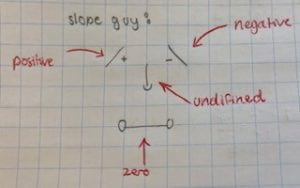Wonder Project

For my science wonder question, I decided to do a study on black holes. What happens in a black hole? Where does it lead to? First needs discuss what a black hole is. A black hole is a hole in space. It is a hole where gravity pulls so much that Even light can’t escape it. What makes the gravity so strong is the fact that matter has been squeezed into a very small amount of space. These holes can be caused when a star is dying. Because light can’t even escape these holes there is no light to make these holes visible. People can’t see these black holes. They are invisible but we still know what they look like. It looks like a heated disc of glowing gas. The reason why astronomers know what these black holes look like our because space telescopes with special tools can help identify these black holes. These space telescopes are used to tell the difference between stars and other figures. Stars can look very close to black holes though using these tools, it tells them how they are able to act differently from each other.
Because the gravity pull is so strong in a black hole to the point where light can’t even escape it, that means no one has been in a black hole and returned safely. From the outside of the whole you can see a ring of light. The hole itself is pitch black from the outside. No one knows what’s on the inside of a black hole. In a black hole, physics go crazy. Turbulence can be twisted are many other things could happen. The title forces inside of a black hole are so strong they could kill you in an instant. In a black hole, there is a theory called singularity. A singularity is what all the matter in a black hole gets crushed into. Though that’s just a theory. Others say that the singularity is actually a whole surface inside the event horizon. Now for the question that I’m trying to answer. What happens in a black hole? And where does it lead to?
A black hole is made up of a large amount of matter and it is squeezed into a very small amount of space. The result of this black hole is an extremely powerful gravitational pull from which not even light can escape like I said because there is no escape. We have no information or insight of what life is like inside of it. Objects can easily be drawn into a black hole. This happens because the gravity in a black hole is so extreme and increasing so rapidly as you approached the black hole that your head and feet would experience drastically different gravitational environments. In theory, if a human were to step into a black hole they would be physically stretched out and your sense of time would slow to a crawl in the brief moments before you fell into the singularity, the zero point of the black hole itself. But all that happens just on be outside of the hole itself. No one knows what happens after you enter it. Once you enter the singularity, no one knows what happens next. But according to physical forces, in theory, you would be crushed down not just to cells or even atoms, but you would be crushed down to a perfect sea of energy. Your mass will then be added to the black holes and you become the object of your own destruction.
A professor named Richard Macy once explained “they’d be ripped to pieces by the enormous gravity, so I doubt anyone falling through would get anywhere”. He also said, “who knows?” And “falling through an event horizon is literally passing beyond the veil — once someone falls past it, nobody could ever send a message back ,” Confidently explaining that no human would be able to tell us what happens in a black hole if someone were to enter one. The black holes are made by the death of a massive star leaving behind a small, dense remanent core. The core is assumed to be roughly 3 times the mass of the sun. It is said that gravity overwhelms the core to such a degree that it would end up falling into a point of singularity. Which would form the black hole. It is then said by a German astronomer named Karl Schwarzschild that the event horizon would come next. The event horizon rising is the point where light and matter can only pass inward, nothing would be able to escape. If a body were to go through a black hole tidal forces would crush your body into strands of atoms. This is also known as spaghettification. The object would then end up crushed at the singularity. In theory, there is an idea that you could pop out somewhere like another side.
Over many years science has been studying where black holes could possibly lead to and one of the many theories they have could be wormholes. They think that these holes could possibly lead to other galaxies, maybe even a path to another universe. This theory has been thought about for quite awhile. In 1935 Einstein teamed up with Nathan Rosen to work on this theory about black holes that connects two different points in spacetime. In 1980 physicist Kip Thorne one of the world’s leading experts on the astrophysical implications of Einstein’s general theory of relativity started a discussion about whether objects could physically travel through these holes. But the answer was that they couldn’t. If light can’t even escape the gravitational pull that the inside of the black hole has, that means the inside of the hole would be completely dark. A camera won’t even be able to catch the inside of a black hole, considering the camera would never make it back out.
Another theory created about black holes are white holes. If black holes do actually lead to another part of a Galaxy or another universe then that means there has to be something completely different on another side. This theory was put out by a Russian cosmologist of the name Igor Novikov in 1964. Novikov’s theory proposed that a black hole could possibly link to a white hole that first existed in the past. But, unlike a black hole, a white hole would allow light and matter to leave. But the difference is that light and matter will not be able to enter through the white hole.
What if there isn’t exactly an end to black holes? This theory has been worked on and it became known as the AMPS firewall, also known as the black hole firewall hypothesis. In theory, after many calculations, quantum mechanics could possibly turn the event rising into a wall of fire. This wall of fire could burn anything in an instant that encounters it. If this theory were to be true, then that means black holes leads nowhere because nothing would ever be able to get out without being burned. But, this theory violates Einstein’s general theory of relativity. If this is what happens when you enter a black hole then if someone were to cross the event horizon, they shouldn’t feel any great hardship. Based on equivalence principle, the object or person would not feel the extreme effects of the gravity. Not many people believe this theory.
In 2014 Hawking once more published a study about the existence of an event horizon, talking about how there is nothing there to burn. His studied mentioned gravitational collapse would produce an “apparent horizon” instead. His studies also said that the horizon would suspend light rays trying to move away from the core of the black hole and would continue for a good “period in time”. He ended up putting more thought into his studies. He found out that apparent horizons temporarily restrain matter and energy before dissolving. They are then later released down the line. It was found that this explanation is what fits best with the quantum theory. The quantum theory explains that information can’t be destroyed and, if it was ever proven, the theory suggests that anything would be able to escape from a black hole. when ending of his studies Hawking went as far as saying that there was a possibility that black holes may not even exist. He specifically said, “black holes should be redefined as metastable bound states of the gravitational field”. Not a lot of people believe in this theory because if it were to be true there would be no singularity, and while the apparent field would move inwards because of gravity, there wouldn’t be a way for it to reach the centre and it would end up being consolidated within a dense mass. But these are all just theories and we have no way of telling whether they are true or not.
For my wonder project we discussed what happens in a black hole and where it leads to. we went through multiple theories Such as wormholes white holes them having no end and then not even existing at all. I chose this question because as of now it is pretty much impossible to actually find out what goes on inside of a black hole. Who knows when we will find out exactly how black holes work . We are all left in wonder about black holes. Personally, I think black holes are wormholes to other galaxies. But as of now we will never be able to actually test that theory.
Video on black holes
citations:

















